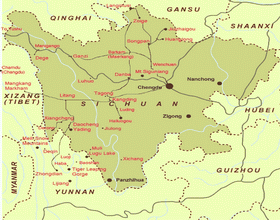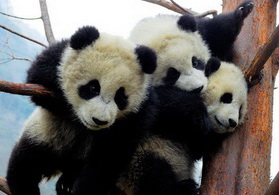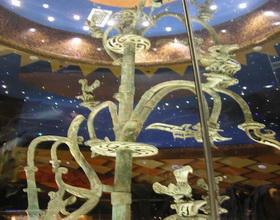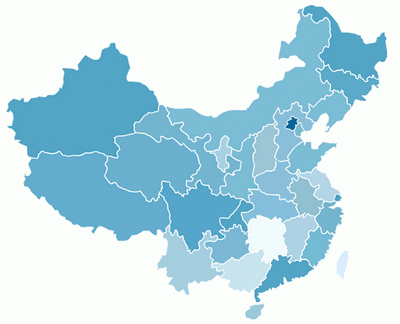Panda-Sichuan Overview
The Giant Panda (Ailuropoda melanoleuca, literally "cat-foot black-and-white") is a m ammal classified in the bear family (Ursidae), native to central-western and southwestern China.The Giant Panda was previously thought to be a member of the Procyonidae family (raccoons and their relatives). It is easily recognized by its large, distinctive black patches around the eyes, over the ears, and across its round body. Though belonging to the order Carnivora, the Giant Panda has a diet which is 99% bamboo. The Giant Panda may eat other foods such as honey, eggs, fish, yams, shrub leaves, oranges, and bananas when available.
ammal classified in the bear family (Ursidae), native to central-western and southwestern China.The Giant Panda was previously thought to be a member of the Procyonidae family (raccoons and their relatives). It is easily recognized by its large, distinctive black patches around the eyes, over the ears, and across its round body. Though belonging to the order Carnivora, the Giant Panda has a diet which is 99% bamboo. The Giant Panda may eat other foods such as honey, eggs, fish, yams, shrub leaves, oranges, and bananas when available.
The Giant Panda lives in a few mountain ranges in central China, in Sichuan, Shaanxi, and Gansu provinces. It once lived in lowland areas, but farming, forest clearing, and other development now restrict the Giant Panda to the mountains.
The Giant Panda is an endangered species and highly threatened. According to the latest report,China has  239 Giant Pandas in captivity and another 27 living outside the country. It also estimated that around 1,590 pandas are currently living in the wild.However, a 2006 study, via DNA analysis, estimated that there might be as many as 2,000 to 3,000 Giant Pandas in the wild.Though reports show that the numbers of wild pandas are on the rise,the International Union for Conservation of Nature believes there is not enough certainty to remove the Giant Panda from the endangered animal list.
239 Giant Pandas in captivity and another 27 living outside the country. It also estimated that around 1,590 pandas are currently living in the wild.However, a 2006 study, via DNA analysis, estimated that there might be as many as 2,000 to 3,000 Giant Pandas in the wild.Though reports show that the numbers of wild pandas are on the rise,the International Union for Conservation of Nature believes there is not enough certainty to remove the Giant Panda from the endangered animal list.
While the dragon has historically served as China's national emblem, in recent decades the Giant Panda has also served as an emblem for the country. Its image appears on a large number of modern Chinese commemorative silver, gold, and platinum coins. The species is a favorite of the public, at least in part because many people find that it has a baby-like cuteness. Also, it is usually depicted reclining peacefully eating bamboo, as opposed to hunting, which adds to its image of innocence. Though the Giant Panda is often assumed to be docile, it has been known to attack humans, presumably out of irritation rather than predatory behavior.



















